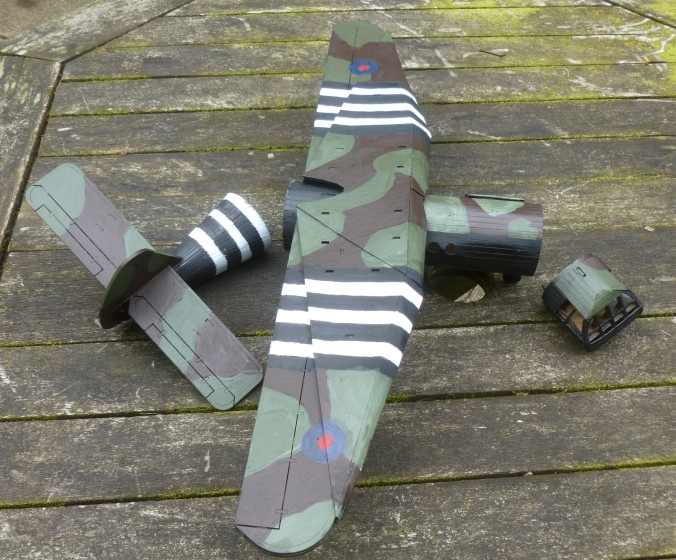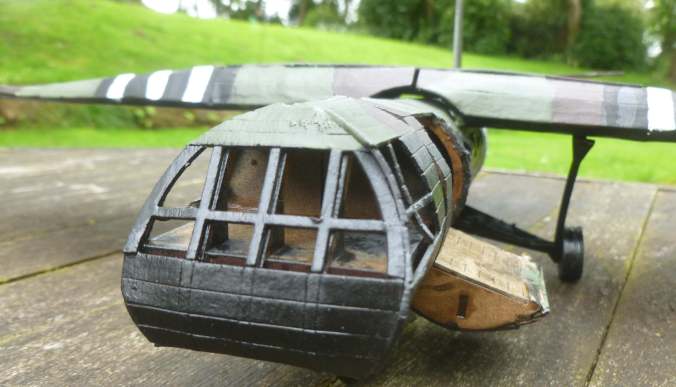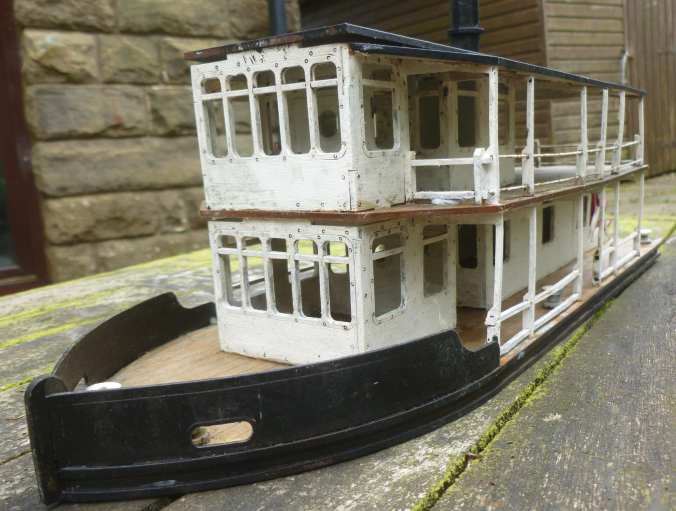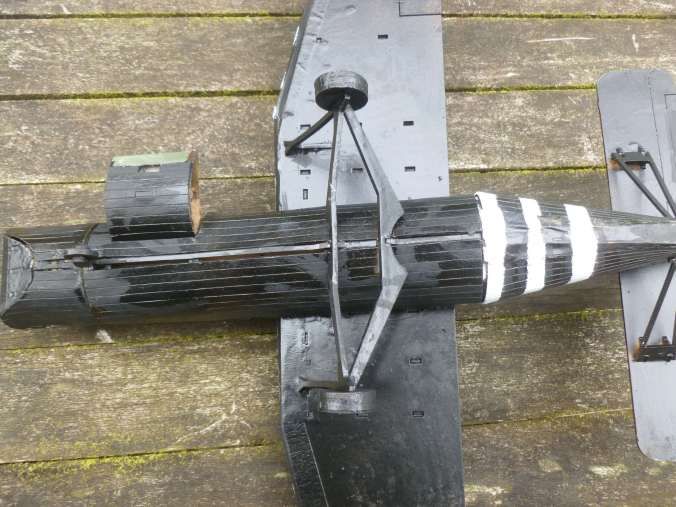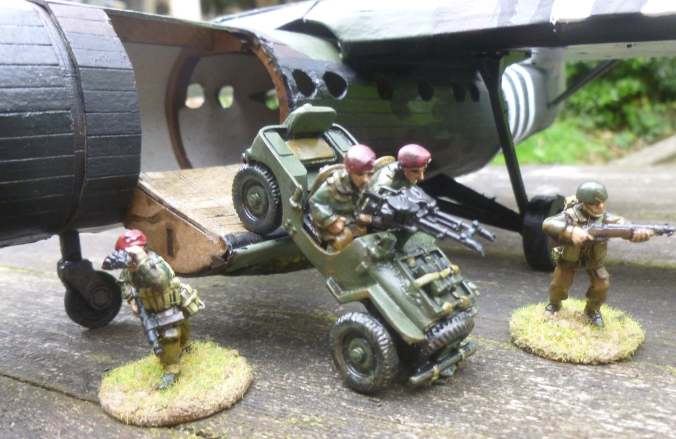Having built up a 28mm Bolt Action British Airborne force thoughts moved to getting them a glider to play with. Warlord and Sarissa must of been of the same opinion releasing an almost 1/56 model in MDF.
The model could be glued as 1 whole but is pretty wide and long so comes with twist fit nose and tail sections to reduce the storage space. Coincidentally this also helps to model the glider having broken up on landing.
The wings also should come off, held in place by the wheel assembly. I elected to glue the wings and wheels onto the main body. There was little real choice in the matter. The wings are built up as left and right with 2 thin struts and a cardboard outer holding the lot together. The wheel attachment to the under wing relied on 2 slot assemblies one of which I had to drill out having probably assembled some indistinct wing part upside down. Gluing the lot together gave much needed stability to the whole. The frontal shot below shows a gap between the wing top and hull top that would probably be hard to avoid even with better modelling skills than mine.
MDF is by nature almost 2 dimensional and making it follow curves is fighting the laws of physics. It is also strong in only 1 plane (no pun intended). MDF does not make a good material for lugs to push into or through holes. The best MDF model structures are nice square buildings. The glider is not the most fiddly piece of work I have done. That award would go to this paddle steamer. The lower deck, upper deck and roof are separate and should hold together with lugs but forcing everything else into place resulted in the lugs and holes being out of line. The wooden deck rail involved pushing MDF slots through holes in the deck posts. I gave up by the 2nd deck and used metal rod which has rusted rather too authentically.
The glider has the same problems but to a lesser extent. The boat instructions were logical but for the glider the images made sense but did not tie in well with the text, some guesswork being required.
The curved glider body is achieved by wrapping card around an MDF core. This is not unlike a real glider but canvas bends better than cardboard and the real glider has considerably more reinforcing struts. I used masking tape to support the glue holding down the open ends of the cardboard skin. I also gave the whole a coating of floor varnish before painting to strengthen the cardboard at some cost in glossiness. The result was a fair effect for the general bodywork but not so good for the side and cockpit windows which are formed by cutouts in the cardboard. The windows would definitely have benefitted from being moulded on MDF strips.
This shows the glider with some 28mms. The ramp doorway is about the right size for a jeep but I see no way to force it any lower. The doorway is ‘fixed’ by MDF hinges, one of which broke soon after assembly. In the real glider there are metal ramps for the jeep to drive down linking the door with the ground.
To deploy a Bolt Action force on board using Horsa gliders would need about 3 of them. It would be possible to get away with 2 and scratch build some bits from tubes and cardboard sheet to do the 3rd as a wreck. Having built this one up I would not be keen to buy another. Plastic 1/72 Horsas are available and given the greater resilience of plastic I might have been better off going down that route.

